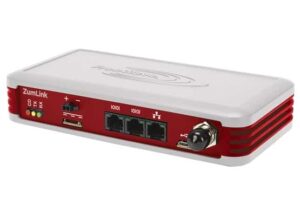 FreeWave Technologies, a developer of industrial, secure Machine to Machine (M2M) and Internet of Things (IoT) wireless networking solutions, has unveiled its next generation of wireless IoT Sensor-2-Server (S2S) solutions. The ZumLink Family represents a new class of wireless IoT communication solutions by offering a flexible new radio design that supports a link rate of up to 4Mbps plus the ability to support third-party applications on top of the versatile communications platform. These capabilities provide customers with increased bandwidth, lower power consumption and endless possibilities for collecting, protecting, transporting and controlling data from the network end points all the way back to the server.
FreeWave Technologies, a developer of industrial, secure Machine to Machine (M2M) and Internet of Things (IoT) wireless networking solutions, has unveiled its next generation of wireless IoT Sensor-2-Server (S2S) solutions. The ZumLink Family represents a new class of wireless IoT communication solutions by offering a flexible new radio design that supports a link rate of up to 4Mbps plus the ability to support third-party applications on top of the versatile communications platform. These capabilities provide customers with increased bandwidth, lower power consumption and endless possibilities for collecting, protecting, transporting and controlling data from the network end points all the way back to the server.
“The new ZumLink Family represents an evolution for FreeWave and opens up brand new communication possibilities for our customers,” said Scott Allen, CMO at FreeWave Technologies. “By combining amazing radio performance with an intelligent platform, ZumLink enables customers to tailor their IoT communications to whatever they need, commercial or industrial, and also provides the ability to develop custom software applications for their future technology requirements.”
The initial release of ZumLink will feature four platforms within its 900 Series consisting of two radio modules, a board level embeddable and a fully enclosed device, all four of which operate in the 900MHz unlicensed frequency range. ZumLink will offer many options for customers and a number of new offerings and capabilities, including:
- 900 MHz Series portfolio:
- Z9-PE enclosed with 1 Ethernet and 2 serial ports
- Z9-T radio module with TTL interfaces
- Z9-C radio module with RS232
- Z9-PC board level device with 2 Ethernet and 2 serial ports
- Standard and User defined hop sets
- Sense before transmit protocol
- Throughput up to 2 Mbps at the 4 Mbps link rate
- Multiple link rates, channel sizes and modulations
- Frequency hopping and single channel
- User channel masking
- Core design allows rapid development
- Supports Wireless Application Server
- Built in spectrum analyzer
- 30% lower power consumption


















